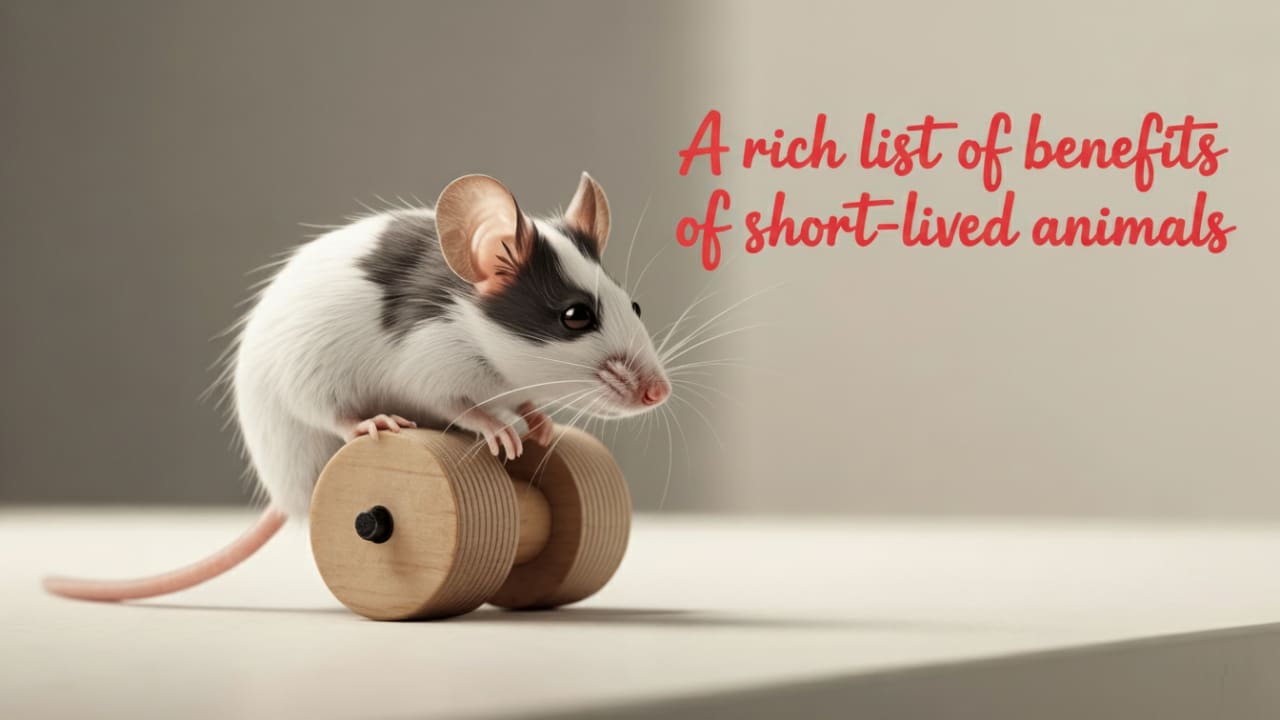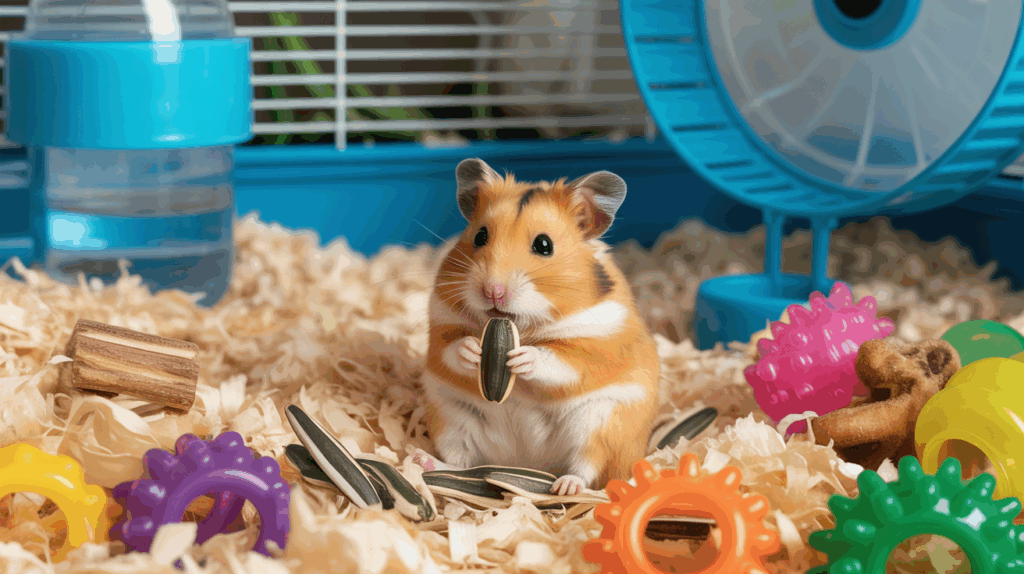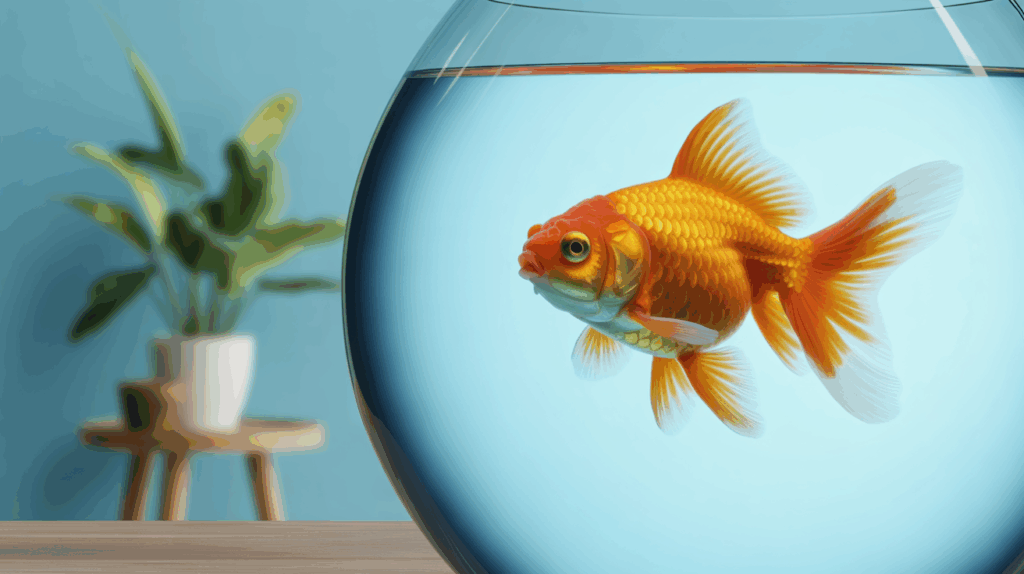
Newsletter Subscribe
Enter your email address below and subscribe to our newsletter

Enter your email address below and subscribe to our newsletter

It’s a heartbreaking experience to have to say goodbye to a pet you’ve bonded with after a year or two. But sometimes, this kind of fleeting companionship may just be what some households need.
Perhaps you’re teaching your kid about responsibility. Maybe you’re a college student trying to fill the loneliness that washes over you when you’re studying at your desk.
Whatever the case, choosing pets with short lifespans does have its own meaningful benefits. For instance, a hamster or mouse may only live 1.5 years. But they form emotional bonds and need more than basic care and water bottles (for teaching responsibility).
Now, just because an animal is short-lived doesn’t mean they are low-maintenance. Amphibians can require precise lighting. Quiet and intelligent species like bettas and rats also need more than just a simple setup.
Exotic animal vets say that habitat neglect or poor diet are usually the cause of early death in these animals. It usually has less to do with genetics.
What about pets that live longer? How do they fit into your lifestyle?
Perhaps you might want to check out animals like guinea pigs, cockatiels, and leopard geckos, then. These animals have varying (but longer) average lifespans.
Let’s also look into how to avoid the hidden costs that may catch first-time pet owners such as yourself off guard. You can then evaluate whether having a short-lived pet is the right choice for you.
Many people assume that a short lifespan means less responsibility. In reality, it’s the opposite. In my clinic, we see that these pets often need more careful and consistent care right from the start to prevent early death. When an animal only lives one to three years, the time to act is much shorter.- Exotic Animal Specialist

Here’s what you can realistically expect to spend on some of the most popular short-lived pets, using updated 2025 prices:
| Pet | Initial Setup Cost | Monthly Cost | Annual Hidden Costs | Estimated 2-Year Total |
| Syrian Hamster | $150–$250 | $20–$30 | $50 (UVB bulbs) + $150 (vet fund) | $830–$1,070 |
| Betta Fish | $100–$200 | $15–$25 | $30 (water tests) + $100 (heater replacement) | $590–$850 |
| Pet Rats (Pair) | $200–$400 | $40–$60 | $300 (respiratory treatment/surgeries) | $1,340–$1,840 |
| Leopard Gecko | $300–$500 | $25–$35 | $100 (UVB replacement) + $150 (vet fund) | $1,150–$1,590 |
Sources: Cost data from Vety.com, A-Z Animals, Reddit pet communities, and veterinary clinics (2024–2025).

You may be browsing through the enclosures looking for a pet you find the cutest to keep you company. Lifespan may not be part of your consideration. But it should be.
Generally, a short lifespan in pets refers to animals that only live fewer than five years. This cutoff can vary depending on species, though. Practically, if the animals live less than the average dog or cat (about 10-20 years), you can say that they are pets with short life spans.
Your pet’s lifespan is determined by a complex mix of biology, genetics, and environment. For example, small mammals like hamsters or mice typically live 1.5 to 3 years. Many insects or aquatic species like betta fish or praying mantises may only live a few months to a couple of years.
Animals like these are classified as pets with a short lifespan because of their biological clocks. They usually have a higher metabolism and shorter reproductive cycles. Cellular aging is also a major factor that contributes to their short lifespan.
That said, you shouldn’t think that a short-lived pet requires any less attention or emotional energy. You should not use their lifespan as an excuse for your neglect. Even an animal that only lives 18 months can form bonds, develop habits, and suffer like any other pet out there.
Taking care of a pet with a short lifespan is more like a sprint, not a marathon. Your time commitment may be brief. But the intensity required can be quite high.

You may be wondering why some pets just age like nothing. Yet, some animals can stick around for so much longer. It seems unfair. Let’s take a look at the biology for this.
The most important biological factor that affects your pet’s lifespan is their metabolic rate. Smaller animals like hamsters, mice, and some reptiles have incredibly high metabolisms.
This means their cells divide more quickly. Their organs work faster. And they burn through energy much faster. Over time, such workings lead to cellular wear and tear. And that’s how our short lifespan pets die much more quickly than the larger animals.
Also, know that some animals are meant to mature and reproduce quickly. It’s something biologically programmed. These animals live short lives as well.
For instance, many insects will just die from reproducing once. Some small mammals can reach adulthood within a few weeks. And they’ll start reproducing shortly after. It’s nature. It’s for the ecosystem. But this is often bittersweet for pet parents like us.
The cost of ownership may be lower for pets with a short lifespan. But know that you’ll still need to invest in the right resources to help them reach their full life expectancy. Think about the proper lighting, temperature, diet, and enrichment. Stretch out that short time you have with your little one as much as you possibly can.
Some of us may want an animal companion that stays with us throughout our lives. But if you’re one of those who can’t commit to such a decade-long relationship, then some of the pets with the shortest lifespans may suit you better. Let’s check out the options available out there.
At number one, we have mayflies. These creatures barely live beyond 24 hours after maturity. They are certainly not your typical, everyday pet. But they are sometimes kept for observation and educational purposes.
Other, more conventional insects include stick bugs and mantises. They can usually live 6 months to a year. It’s a rather light commitment. However, these small pets with short lifespan windows will still need careful climate control. So, do take care of them.
Hamsters, mice, and rats are some of the most popular choices. Your kids will probably love them. They usually live only 1.5 to 2 years. So, they typically give children the most emotional “starter pet” experiences.
Bettas and goldfish are quite beginner-friendly. Bettas can live 3-5 years if well cared for in filtered tanks with heaters. Goldfish may live 10-20 years if cared for properly with large tanks and filtration.
Then, we have the amphibians, frogs, and axolotls. These animals usually have a lifespan of about 2 to 6 years, depending on the species. Another exotic pet, hedgehogs, is also quite popular. And they typically live 3 to 5 years.
Are Short-Lived Pets Right for You? Matching Pets to Your Lifestyle
If you can’t promise a long-term commitment, then pets with short lifespans may be a more flexible and manageable choice. That said, you need to consider if the pet aligns with your lifestyle, schedule, and emotional bandwidth.
Short-lived pets are usually ideal if you have unpredictable routines. For example, they are good for college students, frequent travelers, or families with young children. These small pets with short lifespan cycles offer a lower-stakes experience. They can teach responsibility, empathy, and daily care routines. And it’s not too much of a financial strain on you long-term.
Upfront, these pets don’t usually set you back much (often under $50). But the hidden expenses, like heating elements, tanks, and specialized diets, do add up. The requirements for habitat, temperature, and humidity can be very specific for certain species. So, be wary of that.
Another thing you need to consider is the emotional cycle. Shorter lifespan means more frequent goodbyes. Perhaps this can be a gentle introduction to reality for some people. But, for some (especially children), it could be quite emotionally taxing. So, if you’re a parent, take note of how your child might react to repeated pet losses. Don’t make the mistake of traumatizing them.
A study from Massachusetts General Hospital found that 63% of children experience the death of a pet within their first seven years of life. The impact can be deep and long-lasting; children who lose a pet may show signs of emotional distress for up to three years after the loss.
For Ages 3–5 (Preschoolers):
For Ages 6–10 (School Age):
Child Psychologist Insight:
“Using a pet’s death to teach about the natural cycle of life is healthy, but it must be handled with honesty and compassion. Let your child see that you’re sad, too. It shows them that grief is normal.”- Dr. Lisa Matthews, Child Psychology Associates
When adults say things like “It was just a hamster,” children may feel their sadness isn’t important. This is called disenfranchised grief: grief that isn’t fully recognized by others. For children, this can make their pain even harder to process.
Immediate Response (First 24 hours):
Memorial Activities (First week):
Experts suggest waiting 2–4 weeks before bringing in another pet. Rushing to replace one can:
You may think that a pet with a short lifespan is a compromise. But some households find that these little companions offer a surprisingly rich list of benefits. They are a low-commitment entry point into pet ownership.
The first advantage is flexibility. Short lifespan pets are ideal if you are in the transitional life stages. That goes for students, military families, and renters. You can’t commit to a 10- to 20-year pet in such cases, usually. So, a hamster, for example, that lives for about 2-3 years, could provide you with a fulfilling experience without the long-term obligation.
That goes for cost as well. The initial and ongoing expenses for short-lived pets are much lower than for long-term pets. They do not need vet visits as often. And even though you need to invest in things like cages, heating pads, and tanks, they usually do not cost as much. In short, the total investment can be more manageable in a financial sense.
Pets with short lifespans also offer hands-on learning opportunities for children or first-time owners. Their short window of life can help you experience the full cycle of responsibility. That means from setup and bonding to the inevitable end-of-life care, you will have had the chance to experience them. And pediatric vet advisors say that such experience can help children learn empathy, routine, and emotional resilience.
Another thing is the fascination of your animal’s behaviors and the unique care ritual needed. Some of us find it rewarding to discover new things about our pets. How is my rat so intelligent in solving puzzles? Why do my insects do these ritual dances? What should I do to make sure they live comfortably for these moments? It brings out the novelty in our daily life.
Let’s take a look at some myths surrounding pets with short life spans in this section. These are things that shape our attitudes and mindsets towards treating the little animals.
Now, the most common misconception (and we’ve kept emphasizing otherwise) is that short-lived pets require less care. No, that’s not true. The care period is shorter, but not the care quality, such as specialized equipment and regular upkeep.
Many pets with short lifespans, like frogs, axolotls, and certain insects, require very specific temperature control, humidity level, lighting, and diet. Don’t skip any of the essentials, or they’ll die a premature death. In some cases, they might have to suffer through a period before meeting their end.
Another false assumption is that short-lived pets don’t bond with humans. It’s true that some of these animals, like a betta fish, can’t follow you around the house like a golden retriever can. But they still recognize their caregivers. They respond to routines. And they certainly display their unique personalities. This can make their loss more emotional than you may think, especially for kids.
Then, there’s the cost. Most people think that they don’t need to spend much on short-lived pets. But the expenses incurred over their short lifetime may surprise you. The initial cost may not be expensive. However, you’ll need to consider the cost of the enclosure, specialized diet, and all the other important life-sustaining and enriching resources as well.
“Rats are highly social and intelligent animals. They form close bonds with their owners and can even show signs of grief when separated. Referring to them as ‘starter pets’ is misleading and unfair. In post-mortems, I’ve seen the suffering that neglect causes these animals.”- Dr. Sarah Mitchell, DVM, Veterinary Consultant, Blue Apple Rattery
Yes, there are some ways to help your short lifespan pets live longer. You can’t override biology. But there are things within your control that can help buy your little companion weeks, months, or even years of extra life.
First, environmental stability is very important for pets with short lifespans. Make sure that the temperature does not fluctuate and that the humidity level is under control. Lighting also has an effect on your pet’s internal systems.
For example, many amphibians will need precise UVB lighting cycles to help them process calcium properly. If you don’t provide such necessities, they can suffer from metabolic bone disease. So, invest in a programmable lighting setup or a thermostat-controlled habitat. It may cost about $40-$100 upfront, but there’s a chance of doubling your pet’s lifespan.
Nutrition is the all-time game-changer. Don’t feed your small mammals and reptiles generic mixes or inconsistent diets. Exotic pet vets say that poor diet is the silent killer in most short-lived pets. Try giving your little one species-specific meals. These can include something rich in protein, fiber, or gut-loaded insects.
Also, enrichment matters just as much. Your pet shouldn’t be living in a place that’s sterile or cramped. They get stressed out easily. And that lowers their immunity and speeds up aging. Try adding some climbing structures and hideouts. You can also provide them with mentally stimulating toys. These can all help reduce their stress hormones and boost their vitality. Even changing the scenery in the cage can help manage their boredom.
Here’s a DIY tip. If you’re keeping rodents and reptiles, you can try to repurpose cardboard tubes, safe wooden blocks, or clean egg cartons. These animals can play with them for hours. And you won’t need to spend the extra cash buying toys for them.
“The leading cause of early death in hamsters I treat isn’t old age- it’s wet tail caused by stress and poor cage hygiene. A clean, roomy enclosure isn’t optional; it’s essential for survival. Hamsters can die within 48 hours once symptoms appear.”-Dr. Katherine Quesenberry, DVM, MPH, DABVP (Avian), MSD Veterinary Manual
You may really like the profiles of small pets with short lifespan, but you want a longer-term bond. Well, you’re not completely out of options. Let’s take a look at some other pets that can live beyond the 1-3 year lifespan.
First up, we have one of the most popular choices, the guinea pig. These little ones can usually live about 4 years. With proper care, you may even be able to stretch their lifespan further. This is especially the case if you house them with a compatible friend and provide them with vitamin C-rich diets. Remember, guinea pigs need spacious enclosures and daily cleaning.
If you’re thinking of something exotic, then maybe turtles and box tortoises could be your ideal choices. These animals can live 20 to 50 years, depending on the species. But keep in mind that the setup costs are higher, and the care requirements are also stricter. You can expect to spend more than $300 investing in heating, UVB lighting, and dietary supplements for them.
There are also parrots, especially small species like cockatiels and parakeets. These feathered companions can often live 10 to 20 years if you provide them with the right environment and mental stimulation. Parrots are very intelligent, and they’ll need interaction almost on a daily basis in order to thrive.
Think carefully and see if you’re ready for the emotional cycle of pets with the shortest lifespan. Otherwise, consider these longer-lived alternatives to avoid the heartbreak of frequent goodbyes.
Are you still thinking about whether you should pick up pets with short lifespans? We’ve got you. Let’s take a look at some of the most frequently asked questions regarding this topic.
The mayfly probably has the shortest adult lifespan (just 24 hours). As pets, insects like praying mantises or stick bugs usually live only a few months.
Betta fish, stick insects, and some species of hermit crabs often need minimal maintenance. That said, you still need to provide them with proper habitat, temperature regulation, and nutrition.
Parrots (like cockatiels), turtles, and some geckos can live 20+ years. But again, you’ll need to provide them with the right care.
Beyond pets, certain types of jellyfish and gnats have the shortest lifespans. As for common pets, mice and hamsters typically live just 1.5 to 3 years.
The Greenland shark has an extremely slow aging process. They can live for over 400 years. As for pets, koi fish and tortoises age slowly. They can live for decades.
Shorter lifespans mean short-term relationships. This means short-lived pets can be ideal if you’re unable to commit long-term. However, the emotional turnover can be quite difficult for small children.
Generally speaking, smaller animals have faster metabolisms. This leads to their cells to age more quickly, shortening their natural life cycles.
Yes. You can extend the lives of your short-lived pets with a proper diet, clean habitat, and stress reduction. In some cases, you could double their expected years.
They can be. These pets teach responsibility, empathy, and the natural life cycle. Having said that, parents should prepare their kids for the emotional aspect of pet loss.
Hamsters, mice, bettas, and stick insects are usually good entry-level options. They have simple needs. However, you’ll still need to offer meaningful interaction.
Getting a pet is a decision that involves responsibility, commitment, and some level of sacrifice on your end in exchange for companionship. Think carefully and consider if the animal aligns with your expectations, resources, and emotional capacity.
A pet with a short lifespan can offer a deep connection, though it might be short-lived. However, they are much more budget-friendly and do not demand as drastic a change to your life schedule long-term.
Having said that, you should avoid thinking that short-lived pets are “easy.” They can demand just as much commitment as traditional pets. We’ve even seen how environmental factors can directly impact their longevity.
You should now be equipped with adequate knowledge to make an informed choice. Be sure to find a pet that aligns with your lifestyle and treat these animals with care and patience.
Have you ever owned a pet with a short lifespan? Do you like the experience? What was the struggle? Share your story or advice in the comments below!